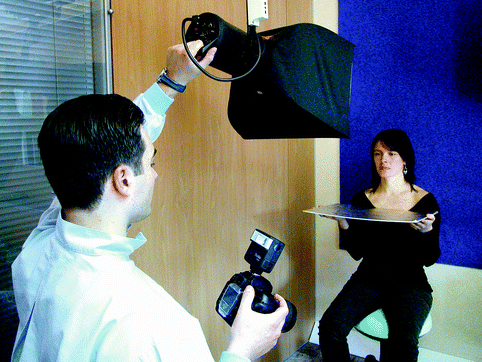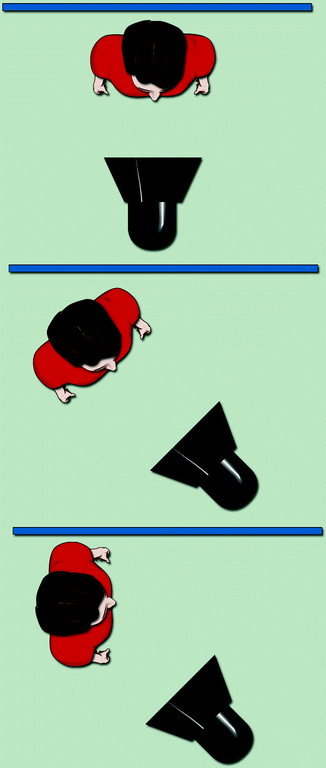and Paolo Biondi2
(1)
Aesthetic and Maxillofacial Surgery, Padova, Italy
(2)
Maxillofacial Surgery, Forlì, Italy
Abstract
Several times we have observed my colleagues getting annoyed because of a less-than-perfect result obtained with the latest high-ended camera. What are the weak points in clinical facial photography? The principal variables are the type of camera, the quality of the lighting, the lenses, the film (or the CCD), the background panel, patient positioning, and camera positioning (framing) during the photographic shoot. Additional important steps are film developing and printing, as well as picture storage.
Several times we have observed my colleagues getting annoyed because of a less-than-perfect result obtained with the latest high-ended camera. What are the weak points in clinical facial photography? The principal variables are the type of camera, the quality of the lighting, the lenses, the film (or the CCD), the background panel, patient positioning, and camera positioning (framing) during the photographic shoot. Additional important steps are film developing and printing, as well as picture storage.
After years of direct experience and commitment, I am convinced that the most demanding aspects of clinical photography are patient lighting, the topic of this chapter, and patient positioning and framing, which is discussed in Chap. 3.
2.1 Lighting Techniques for Clinical Facial Photography1
The taking of clinical photographs, to record and to utilize during surgery, is an essential part of the activities of every professional practice or facial surgery department. The narrowness of the office, the cost of the equipment, and a vague lack of time do not constitute excuses for less precise patient documentation.
To obtain the best quality and consistency of results, many suggest the use of a professional lighting system composed of two or more flash units. Thus, an entire room or a large part of it should be permanently reserved for this use.
In the past 8 years, I have utilized a system of lighting based on a unique source of light (monolight flash), which is ceiling-mounted in a corner of a room also dedicated for other activities, with good results. This chapter presents a description of the key technical points and the rationale for using single-light equipment. All the clinical facial photographs that illustrate this book have been obtained utilizing this lighting system.
2.2 Equipment and Technique
The studio lighting equipment consists of a single professional flash (System 300 professional compact flash by System Imaging Ltd, UK), which is ceiling mounted on a straight rail parallel to the background panel. The total length of the rail is 0.95 m. The distance of the flash unit from the background is fixed at 1.6 m. A pantograph (Friction Pantograph 3250 by I.F.F., Calenzano–Firenze) holds the monolight and allows unrestricted vertical adjustment. A rectangular 0.75 × 0.35 m soft box (75 Light Bank by System Imaging Ltd, UK) fits on the flash unit, softening and diffusing the light. An alternative smaller and more practical soft box, 0.4 × 0.3 m (Chimera Lightbanks, Boulder, Colorado, USA), has also been utilized during the past 5 years.
The distance from the monolight to the subject is fixed (about 1.1–1.2 m), so each photograph is taken at the same F-stop of 16 with 100 ISO films.
The lighting is directed toward the subject in all views, maintaining the flash unit at a higher level. The rectangular soft box is held in a horizontal position.
In order to eliminate the problem of shadows on the submental region and under the nasal base, the patient holds, with her hands, a small rectangular reflecting panel of 0.35 × 0.7 m (Fig. 2.1). This panel is positioned horizontally against the chest, just under the collarbone.


Fig. 2.1
Photographic set. The patient holds, with her hands, a small rectangular reflecting panel positioned horizontally against the chest, just under the collarbone. The operator easily adjusts the monolight vertically and horizontally
The ceiling-mounted rail allows the adjustment of the monolight to a side or central position (Fig. 2.1). It easily follows the rotation of the subject from the frontal to oblique and lateral views. Figure 2.2 shows the basic positions of the flash unit used in the different views to achieve the best results. An important rule is to maintain the subject’s position close to the background panel itself in order to avoid the need for an adjunctive flash unit to light the background panel.


Fig. 2.2
The three main patient/monolight positions utilized to capture the various facial views
For a routine set of photographs consisting of full-face portraits and closeup views, I use the 105 mm Micro-Nikkor lens.
I personally do not use a camera tripod for stability because of the very short time of light emission by the flash unit; focusing is done by moving the camera back and forth. A camera tripod also interferes with the positioning of the monolight and the patient’s head. In almost every case, I directly help the patient during positioning, touching her chin with my hand (Fig. 2.3). On the other hand, a viewfinder grid screen is highly recommended to help the surgeon orient the camera precisely.


Fig. 2.3
Positioning of the patient’s head
To avoid using a direct wire connection to the monolight, a small on-camera electronic flash, oriented in a reverse direction, gives the input to the built-in slave unit of the main flash.
The space reserved for clinical photography in the room is rather narrow, as illustrated in Fig. 1.1 of the previous chapter.
Due to the combination of movements permitted by the pantograph and the ceiling-mounted rail, the flash unit can be easily positioned high up, near the ceiling and on the left wall of the room when not in use to leave space for other activities.
The blue background panel, 0.95 m wide and 1.10 m high, is made from a sheet of plastic material for outdoor use. An advantage of this panel is that it is washable without running the risk of losing or changing the color.
The patient and I sit on rotating stools with rollers. The chairs are easily adjusted in the vertical position in order to maintain the subject and the camera at the same height during the capture of the images.
I usually take my clinical photographs personally, without the aid of an assistant, and the entire procedure requires no more than 5 min. For better efficiency and to save time, I follow a specific sequence:
-
I ask the patient to meet me in the photo area, turn on the monolight, instruct her on how to use the reflecting panel correctly, and adjust her height on the stool, close to the blue background panel.
-
I pick up my camera, turn on the small on-camera electronic flash, and set the standard time/diaphragm couple of 1/125 s–F16 with the monolight adjusted to full-power light emission.
-
I shoot the frontal view first, with the patient and the flash unit oriented, as in Fig. 2.2 (top).
-
I position the patient’s head for the extended and basal views and take the photographs. The position of the monolight remains unchanged.
-
I position the patient for the right oblique views, taking care to maintain her close to the blue background panel. The monolight is oriented, as in Fig. 2.2 (central), and the photos are taken.
Stay updated, free dental videos. Join our Telegram channel

VIDEdental - Online dental courses


